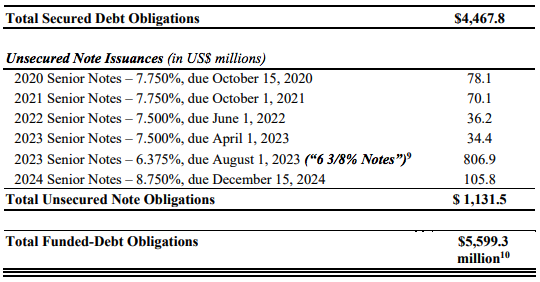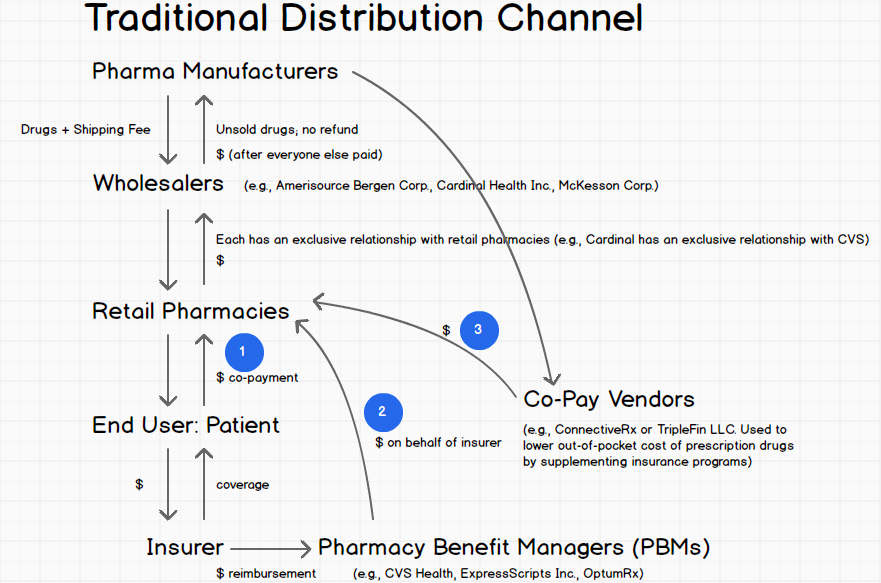🎥New Chapter 11 Bankruptcy Filing - Fuse LLC (a/k/a Fuse Media)🎥
Fuse LLC
April 22, 2019
California-based Fuse LLC, a multicultural media company composed principally of the cable networks Fuse and FM, filed a prepackaged chapter 11 along with 8 affiliated debtors in the District of Delaware to effectuate a swap of $242mm of outstanding secured debt for $45mm in term loans (accruing at a STRONG 12% interest and maturing in five years), new membership interests in the reorganized company and interests in a litigation trust. General unsecured creditors will recover nothing despite being owed approximately $10mm to $25mm.
The company is well known to millions of US homes: approximately 61mm homes get Fuse, an independent cable network that targets young multicultural Americans and Latinos. FM’s music-centric content reached approximately 40.5mm homes “at its peak.” The company has three principal revenue streams: (a) affiliate fees; (b) advertising; and (c) sponsored events; it generated $114.7mm in net revenue for the fiscal year ended 12/31/18 and “had projected affiliate fees of approximately $495 million through 2020.”
Why is it in bankruptcy? In a word, disruption. Disruption of content suppliers (here, Fuse) and content distributors (the traditional pay-tv companies). Compounding the rapid changes in the media marketplace is the company’s over-levered balance sheet, an albatross that hindered the company’s ability to innovate in an age of “peak TV” characterized by endless original and innovative content.
The company illustrates all of this nicely:
“…the overall pay-TV industry is in a period of substantial transformation as the result of the introduction into the marketplace in recent years of high quality and relatively inexpensive and consumer friendly content alternatives (e.g., Netflix, Hulu and others). The ongoing marketplace changes have resulted in, and will continue to cause, a material decline in pay-tv subscribers and related affiliate fee revenue as a result of a declining number of new subscribers, "cord-cutting" (the cancellation of an existing pay-tv subscription), and "cord-shaving" (the downgrading of a pay-tv subscription from a higher priced package to a lower priced package). Each quarter the Company receives less revenue from its traditional pay-tv distribution partners as the result of the decline in subscribers receiving the Company's networks. And new sources of revenue for the Company, although developing and in progress, have not grown sufficiently to offset revenue declines in the legacy business. As a result of these trends, the refinancing of the Company's debt was not viable.”
Said another way, on a macro level, Netflix Inc. ($NFLX), Amazon Inc’s ($AMZN) Prime service, Hulu ($DIS) and various other OTT services have taken a huge chunk out of conventional bundlers and now victims are shaking from the tree. On a more micro level, the company is subject to distribution agreements with pay-TV operators. The majority of agreements were guaranteed through 2020, representing contracted revenue estimated at approximately $495mm through 2020. But the company’s debt, however, prevented it from investing in programming, marketing and original content at the same pace as its rivals. Consequently, Comcast and Verizon Fios ($VZ)— which represent significant percentages of the debtors’ subscriber base and, in turn, revenue — stopped distributing Fuse at the end of 2018. Compounding matters, DirecTV recently notified the company that it, too, intended to terminate its distribution agreement with the debtors — which is now subject to litigation in California. Talk about a hat trick!!
The company intends to use cash collateral to finance its cases. If successful, the company will emerge from bankruptcy with a substantially reduced balance sheet, having cut its debt by approximately 80%. After de-levering, the company believes it…
“… will be better able to effectively support its core linear networks business, as well as pursue growth areas, such as virtual multichannel video programming distribution (e.g., YouTube TV and Hulu Live), advertising supported distribution (AVOD), and complementary areas such as live events and music festivals. The Company also will be well-positioned post-emergence to explore strategic transactions that can accelerate greater growth in new areas for stakeholders.”
We suspect Fuse won’t be the last content supplier to shake out from this evolution in the media space.
Jurisdiction: D. of Delaware (Judge Gross)
Capital Structure: $242mm 10.375% Senior Secured Notes due 2019
Company Professionals:
Legal: Pachulski Stang Ziehl & Jones LLP (Richard Pachulski, Ira Kharasch, Maxim Litvak, James O’Neill)
Financial Advisor: FTI Consulting Inc. (Michael Katzenstein)
Claims Agent: KCC (*click on company name above for free docket access)
Other Parties in Interest:
Supporting Noteholders
Legal: Fried Frank Harris Shriver & Jacobson LLP (Brad Scheler, Peter Siroka, Emil Buchman, Andrew Minear) & (local) Richards Layton & Finger PA (Michael Merchant)











